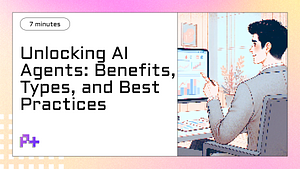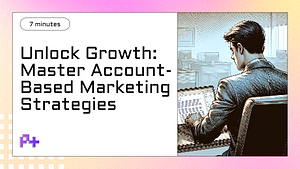1. Why Use Microsoft Designer's Free AI Image Generator?
In today's digital landscape, the demand for high-quality visual content is at an all-time high, making tools like Microsoft Designer's free AI image generator incredibly valuable. One of the primary reasons to use this AI-generated tool is its ability to produce professional-looking images with minimal effort. Whether you're a small business owner, a marketer, or a content creator, the intuitive interface allows users to create stunning visuals quickly, ensuring that you can focus on your core activities rather than spending hours on design. With just a few clicks, you can generate images that are perfectly tailored to your brand's needs, making it an essential resource for anyone looking to enhance their online presence.
Another compelling reason to utilize Microsoft Designer's AI image generator is the customization options it offers. This tool leverages advanced algorithms to understand your preferences and style, allowing for a more personalized experience. Users can input specific keywords or themes, and the AI will generate images that resonate with those prompts. This level of customization not only saves time but also ensures that the visuals align closely with your project’s goals. Furthermore, the AI continually learns from user interactions, improving its suggestions and outputs over time, which means that the more you use it, the better the results become.
Lastly, using Microsoft Designer's AI image generator is not just about convenience; it also promotes creativity and innovation. By providing a platform where users can explore various styles and formats, it encourages experimentation without the fear of making costly mistakes. This can lead to unique visual content that stands out in a crowded market. Additionally, the integration of AI technology means that users can stay ahead of design trends, ensuring that their images are fresh and relevant. Overall, leveraging Microsoft Designer's AI-generated images can significantly enhance your content strategy, making it easier to engage your audience and communicate your message effectively.
2. Create Stunning Images Instantly: From Text to Image with Generative AI
In recent years, the rise of generative AI has revolutionized the way we create visual content. One of the most exciting applications of this technology is the ability to transform text prompts into stunning images instantly. By leveraging advanced algorithms, AI-generated imagery allows users—from artists to marketers—to produce high-quality visuals without the need for extensive graphic design skills. This process not only saves time but also opens up a world of creative possibilities, enabling anyone to visualize concepts that were once confined to the imagination.
The mechanics behind text-to-image generation involve sophisticated neural networks, such as Generative Adversarial Networks (GANs) and diffusion models. These systems are trained on vast datasets, learning to understand the nuances of language and visual representation. When you input a text description, the AI interprets the key elements and generates an image that reflects the provided details. This capability is particularly beneficial for businesses looking to create unique marketing materials or for individuals seeking to bring their creative visions to life. As the technology continues to evolve, the quality and realism of AI-generated images are becoming increasingly impressive, allowing for more intricate designs and diverse styles.
Moreover, the accessibility of AI tools for generating images has democratized art creation. Platforms like DALL-E, Midjourney, and Stable Diffusion empower users to experiment with various styles and themes, fostering innovation across industries. Whether you're a content creator looking for eye-catching visuals or a hobbyist wanting to explore artistic expression, generative AI can serve as an invaluable resource. By embracing these tools, anyone can harness the power of AI-generated imagery to enhance their projects, making it easier than ever to create stunning visuals that captivate audiences.
3. 3 Tips for Getting the Best AI-Generated Images
When it comes to obtaining the best AI-generated images, understanding how to effectively utilize the technology is crucial. First and foremost, clarity in your prompts is key. AI image generators rely on textual descriptions to create visuals. Therefore, providing detailed and specific instructions can significantly enhance the quality of the output. Instead of vague prompts like “a landscape,” try something more descriptive, such as “a serene mountain landscape during sunset with a clear lake reflecting the sky.” This clarity helps the AI grasp your vision more accurately and produce images that closely align with your expectations.
Another important tip is to experiment with different styles and parameters within the AI tool. Most AI image generators offer various settings that allow users to customize aspects like artistic style, color palette, and resolution. By adjusting these parameters, you can fine-tune the generated images to better suit your needs, whether you are looking for hyper-realistic visuals or abstract art. Don’t hesitate to run multiple iterations with varying settings; this trial-and-error process can lead to discovering unique and captivating images that you might not have initially considered.
Lastly, always make use of editing tools post-generation to enhance your AI-generated images further. While AI can create stunning visuals, minor tweaks can elevate the overall quality. Utilize software like Adobe Photoshop or free alternatives to adjust brightness, contrast, and saturation, or to add overlays and text. This final touch can transform a good AI-generated image into a great one, making it more appealing for your specific use case, whether it’s for social media, marketing materials, or personal projects. By following these tips, you’ll be well on your way to creating impressive and engaging visuals that stand out.
4. Exploring Different AI Image Styles and Features
As the field of AI-generated imagery continues to evolve, artists and technologists alike are exploring a myriad of styles and features that these advanced systems can produce. AI-generated images can vary widely, from hyper-realistic portraits to abstract art, each style offering distinct visual experiences. One popular AI technique is generative adversarial networks (GANs), which pit two neural networks against each other to create stunningly detailed images. This method allows for the blending of different artistic styles, enabling creators to generate images that combine elements from various genres, such as impressionism with modern digital art.
Another fascinating aspect of AI-generated imagery is the ability to customize features according to user preferences. Tools like DeepArt and Artbreeder allow users to manipulate specific attributes of images, such as color palettes, textures, and even the emotional tone of the artwork. This level of customization means that users can produce unique pieces that reflect their personal style or the specific needs of a project. Moreover, the implementation of style transfer techniques enables the application of the visual characteristics of one image to another, creating a new work that retains the essence of the original art while introducing novel elements.
In addition to style and customization, the functionality of AI-generated images extends to practical applications across various industries. For instance, in marketing, businesses utilize AI-generated visuals to create compelling advertisements that resonate with target audiences. In the gaming industry, developers harness these technologies to generate realistic environments and character designs, enhancing user experience. As AI continues to advance, the exploration of different styles and features not only revolutionizes the way we create and perceive art but also opens up new avenues for innovation across multiple sectors, solidifying AI-generated imagery as a crucial component of the modern digital landscape.
5. Frequently Asked Questions About AI Image Generation
As AI-generated images gain popularity, many people have questions about the technology and its implications. One common query is about the ethical considerations surrounding AI image generation. With the ability to create realistic images from scratch, concerns about copyright and ownership arise. When an image is generated by an AI, who holds the rights? This question is crucial for artists and designers who may find their work replicated or influenced by AI tools. It's essential to stay informed about the evolving legal landscape, as laws regarding AI-generated content are still developing.
Another frequently asked question pertains to the quality and accuracy of AI-generated images. Users often wonder if these images can truly match the creativity and nuance of human artistry. While AI algorithms have made significant strides in generating high-quality images, they may still struggle with certain concepts, such as abstract ideas or emotions. This can lead to results that occasionally appear unnatural or lack the depth of human-created visuals. However, as technology progresses, the gap between AI-generated and human-generated art continues to narrow, making it an exciting area to watch.
Lastly, many people are curious about the practical applications of AI-generated images. From marketing materials to video game design, the versatility of AI-generated visuals offers numerous opportunities across various industries. Businesses are leveraging this technology to create eye-catching ad campaigns, unique product designs, and even personalized content at scale. As more industries adopt AI image generation, understanding its potential and limitations will be vital for harnessing its benefits effectively. With ongoing advancements, the future of AI-generated images looks promising, encouraging creative exploration and innovation.



